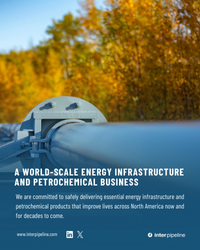U.S. natural gas production has been essentially flat this summer as many producers curtailed, deferred or delayed drilling and well completions earlier in the year. However, some of the same producers, particularly in the Northeast, in their most recent earnings calls, indicated they expect to meet their 2015 production targets by increasing output this winter. In today’s blog, we look at how and why producers defer production and the potential impacts on the market in Q4.
It’s not surprising that some gas producers deferred well completions this summer. Rates of return have been squeezed all year by a combination of low oil, liquids and gas prices. In response to lower prices, producers have made significant capital budget cuts (see Free Fallin’). And besides low prices and returns, Northeast producers in particular have faced midstream capacity constraints that push down prices to bargain basement levels and make it harder to find economically viable routes to market for new production. Producers responded by laying down rigs (Rig Cuts Deep, Output High!) and shifting their drilling activity and spending towards their most productive acreage (thereby cutting costs and increasing rig efficiency). Additionally, those producers that can afford to hold off production (losing cash flow in the short term – something not all have deep enough pockets to do) have used numerous tools and tricks for delaying production while they weather this tough market environment. These include drilling the minimum required to hold on to leases for future development (see Hold On Tight By Production), not completing (i.e. fracking) already drilled wells and choking back big initial production (IP) rates to restrain output until a pipeline tie-in or better pricing becomes available. Producers typically prefer to defer new production volumes in these ways rather than to shut-in existing wells that are producing, because (as we explained in You Can Pay Me Now, Or Pay Me Later) shut-in economics rarely make sense long term.
The gas production picture has varied across the country with slight growth in the Northeast being offset by declines elsewhere. The Northeast (Marcellus and Utica) continues to drive production growth as it has for the past few years, in particular buoyed by new drilling and record IPs in the dry gas window of the Utica Shale. However, if Northeast producers have delayed completing and tying in wells because of low prices then they could rapidly increase production when conditions improve. Recent earnings calls suggest that some Northeast producers believe that the last quarter of 2015 (i.e. winter) is the time when they could crank up output from deferred wells in order to meet 2015 targets.

SCHOOL OF ENERGY HOUSTON!
+ Pre School International Energy Day
RBN's School of Energy returns to Houston with Guest content, CPE Credits and our full energy curriculum.
Houston - September 28 - 30, 2015
The main reason that Northeast producers might be eyeing higher gas production during 4Q2015 is in response to seasonally higher prices. Gas prices tend to be higher in the gas winter months (Nov-March) than in the gas summer months (April-Oct) and typically peak between December and February, because more gas is needed for residential and commercial heating during winter than for electricity generation for air conditioning usage during the summer, at least when assuming normal weather. An abnormally cold winter can cause demand and prices to spike (like we saw in the winter of 2013-14), though price spikes would be dampened in the case of a supply surplus, as they were this past winter (2014-15). A mild winter would exacerbate price weakness in the winter.
Join Backstage Pass to Read Full Article









